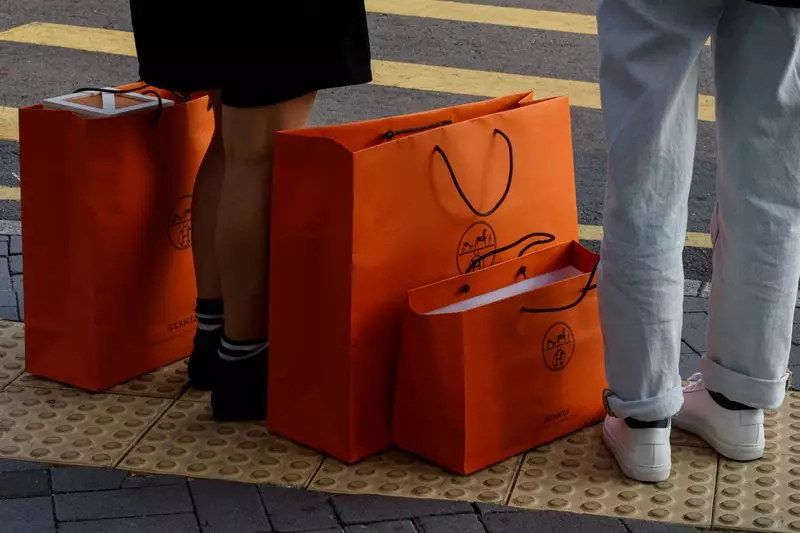The global luxury market is currently experiencing heightened volatility, particularly affected by escalating trade tensions between China and the European Union (EU). As a consequence of the EU’s recent decision to impose tariffs on Chinese electric vehicles (EVs), investors have grown increasingly wary of potential retaliatory measures from Beijing. The specter of luxury goods like high-end handbags and designer shoes facing scrutiny adds a layer of complexity to an already fraught situation. However, expert analyses suggest that while tensions are likely to escalate, direct retaliation against luxury brands remains improbable.
Recent actions by China in response to EU tariffs have primarily focused on products such as brandy, pork, and dairy. France, having advocated for the tariffs on Chinese EVs, has been particularly affected, leading to drops in the stock prices of prominent luxury brands, including LVMH and Kering. The impacts were felt acutely, with shares plummeting between 2% and 6% as investors feared that luxury brands could become collateral damage. Still, analysts note that such a focus on high-end goods would contradict China’s ongoing strategy of promoting luxury consumption within its own borders.
Expert Opinions: Luxury Consumption in China
Leading experts in the field argue that punishing the luxury sector would run counter to China’s economic interests. Patrice Nordey, CEO of Trajectry, emphasizes that the Chinese government has been keen on facilitating the growth of luxury spending domestically rather than seeing affluent Chinese consumers take their dollars abroad. Hainan has emerged as a key duty-free destination, a move that implies Beijing’s recognition of the economic benefits luxury consumption can bring, including steep tax revenues.
Jacques Roizen of the Digital Luxury Group underscores that consumer spending on luxury items within China is economically beneficial for the country. Any fiscal policy that raises prices on luxury goods could inadvertently drive Chinese consumers to make purchases overseas, effectively undermining the government’s goal of retaining consumer spending within the national economy.
The significance of China’s luxury market cannot be overstated, especially during periods marked by economic fluctuations. Analysis indicates that the Chinese luxury market is expected to account for a staggering 25% of the global total in the current year, as reported by Morningstar analyst Jelena Sokolova. This enormous share highlights why European luxury stocks react sensitively to developments in China. With record figures suggesting that last year alone, European luxury goods worth approximately 11 billion euros entered China, the stakes are exceptionally high.
The importance of this market is not merely quantitative but qualitative as well. French brandy shipments comprised 99% of all such imports into China in the previous year, amounting to $1.7 billion. This interdependence suggests a complex web of financial ties that both governments are unwilling to sever in the face of trade disputes.
Both China and the European Union appear to be navigating cautiously through these turbulent waters. Experts like Albert Hu believe that a full-scale trade war is mutually undesirable, given the potential repercussions for both economies. The measured approach thus far indicates a preference for dialogue over confrontation. China’s tactical selection of retaliatory measures, aimed primarily at less crucial products, suggests a desire to maintain open channels for negotiations.
Moreover, the intricate nature of the luxury goods sector complicates claims of unfair trade practices such as ‘dumping.’ As Sokolova noted, the very irreconcilability of premium prices with the concept of price undercutting makes it challenging to justify positioning luxury brands as targets for such accusations.
The ongoing trade tensions between China and the EU cast a shadow over the luxury market, but the implications for target sectors may not be as dire as they initially appear. While investors must remain vigilant, expert insights suggest that a strategic approach prioritizing collaborative solutions is likely on the horizon. As both parties wade through this intricate dialogue, the luxury goods market remains a vital linchpin in the broader economic landscape, warranting keen observation and prudent maneuvering moving forward.

